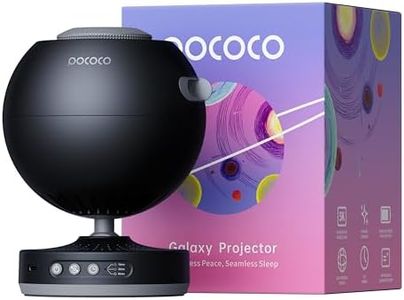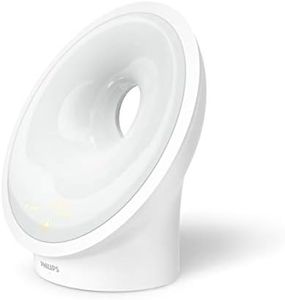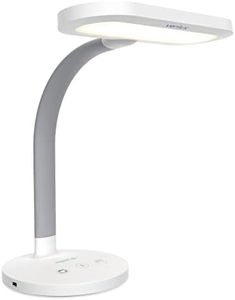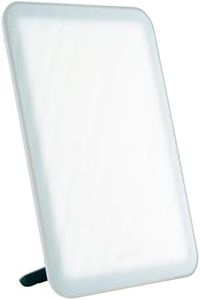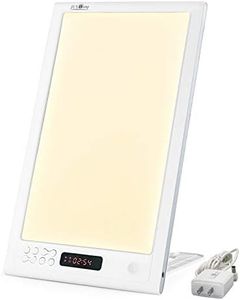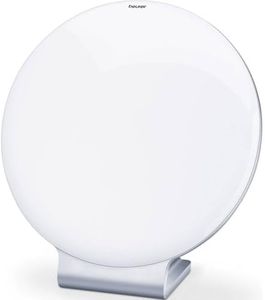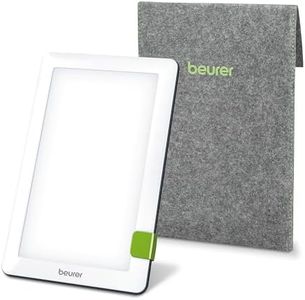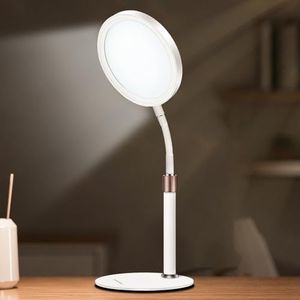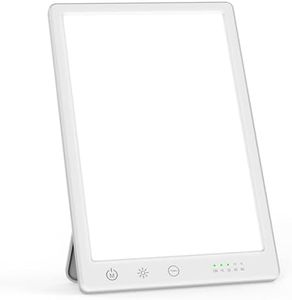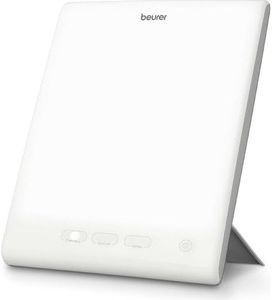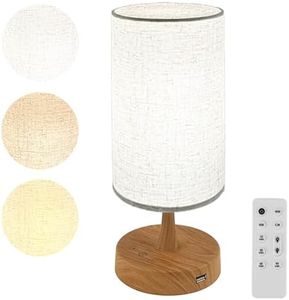We Use CookiesWe use cookies to enhance the security, performance,
functionality and for analytical and promotional activities. By continuing to browse this site you
are agreeing to our privacy policy
10 Best Sad Lights
From leading brands and best sellers available on the web.Buying Guide for the Best Sad Lights
Choosing the right sad light, also known as a light therapy lamp, can make a big difference for those who experience low mood or seasonal affective disorder during darker months. The main goal is to mimic natural sunlight, which helps regulate mood and sleep patterns. To find the best fit, you'll want to look at a few core features that determine how effective and comfortable the light will be for your daily use.Light Intensity (Lux)Light intensity, usually measured in lux, tells you how strong the light is. This is important because higher intensity can be more effective for improving mood and energy levels. Most sad lights range from 2,500 lux to 10,000 lux. Lights with lower lux can take longer sessions to have an effect, while those closer to 10,000 lux can work in shorter periods. For most people, a 10,000-lux lamp used for about 20-30 minutes is standard. However, if you plan to use it while working or for longer periods, a lower lux might be more comfortable. Think about your routine and how much time you want to spend with the lamp each day.
Size and DesignThe size and design refer to how big the lamp is and what it looks like. This matters because a larger light can cover more area and give you more flexibility in how you use it—not just for sitting in one spot, but also while moving around a bit. Compact designs are easier to move and store, while larger panels generally give better coverage. If you plan to use your sad light at a desk or bedside, make sure it's the right size for your space and easy to position.
UV FilterA UV filter ensures that the lamp does not give off harmful ultraviolet rays, which are found in sunlight and can damage skin and eyes with long exposure. It's important because you want the mood-boosting benefits of sunlight without the associated risks. Most modern sad lights are built with UV filters for safety, but always check to make sure your lamp is labeled UV-free. This is especially important if you have sensitive skin or plan to use the lamp frequently.
Color TemperatureColor temperature is usually measured in Kelvins (K) and indicates the color of the light. It can range from warm (more yellow) to cool (more blue and white). This feature is important because it affects how natural and comfortable the light feels. Sad lights typically use a daylight white color, around 5,000-6,500K, because this closely matches actual sunlight. If you prefer a softer, less intense feeling, you might choose something closer to 5,000K. If you want maximum mimicry of daylight, go toward the 6,500K side. Your preference here depends on how sensitive you are to bright light and which is easier on your eyes.
Adjustable BrightnessAdjustable brightness lets you change how strong the light is, so you can customize your experience. This is important because everyone’s sensitivity to bright light is different, and not all situations need the same intensity. Some lamps have only one setting, while others allow for gradual adjustments. If you’re new to light therapy, or if several people in your home will use the lamp, adjustable brightness can help everyone find a comfortable level. Consider this if you want more control over your environment or if you might use the lamp at different times of day.
Timer FunctionA timer function allows you to set the lamp to turn off automatically after a certain period. This is helpful because it prevents you from overexposing yourself and helps you keep consistent, safe sessions. Timers usually range from 15 minutes to an hour. If you have a busy schedule or tend to lose track of time, a built-in timer can ensure you're using the lamp just as recommended for best results.
